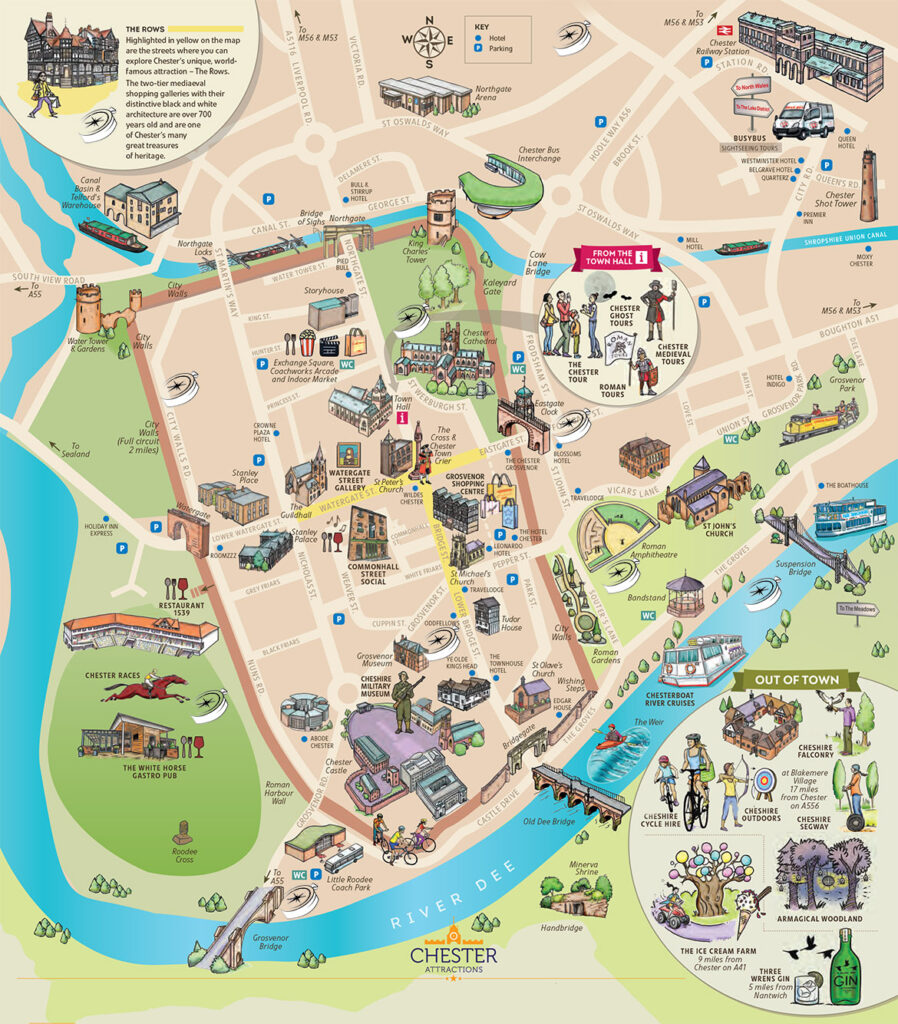
 The compass icons mark Chester’s attractions
The compass icons mark Chester’s attractions
- Chester’s Rows
- Chester’s Roman Amphitheatre
- Chester Cathedral
- Chester Races
- Chester’s Eastgate Clock
- Grosvenor Museum
- Chester Zoo
- Chester’s Grosvenor Bridge
- Chester City Walls
- Chester Regatta

Chester Attractions Map
Chester Attractions Partnership publish a superb FREE map of the city for visitors to enjoy. We supply copies of the publication direct to hotels and many other outlets across the city including local the railway station, Chester Bus Interchange, and the Little Roodee Coach Park Café and further afield. Please let us know if you or your clients need them.
Download the Attractions Map
City Walls
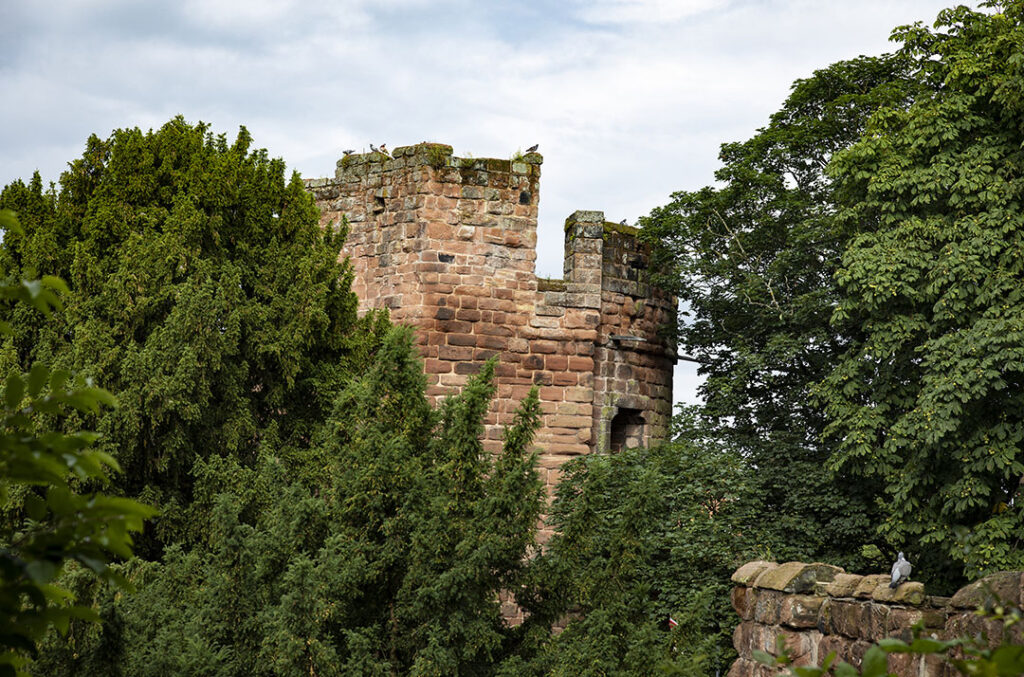
The most complete in the UK and were originally built by the armies of the Roman Empire to protect the Fortress of Deva 2000 years ago from Welsh tribes across the border.
They were extended by the Anglo-Saxon warrior princess Aethelflaeda (daughter of King Alfred the Great) to repel Viking raiders from across the North Sea and strengthened by the Norman invaders, who also built the castles of North Wales.
The City Walls were battered by canon fire during the English Civil War when Cromwell’s army besieged the city for 4 years and bombarded the Royalist forces of King Charles I as they battled against one another for control of the State.
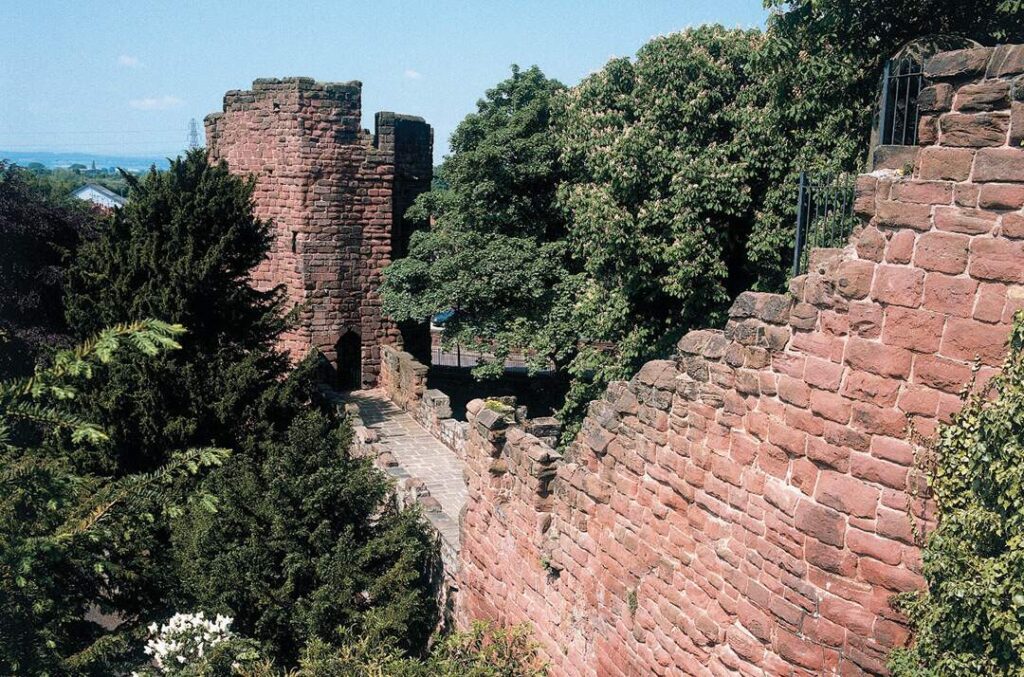

Nowadays they provide a peaceful promenade encircling the city and were largely restored during the Victorian era. Historic buildings along the City Walls are the King Charles’ Tower build in the 13th century with its English Civil War connections and the 14th century Water Tower built to guard the entrance to the Port of Chester.
Chester's Rows
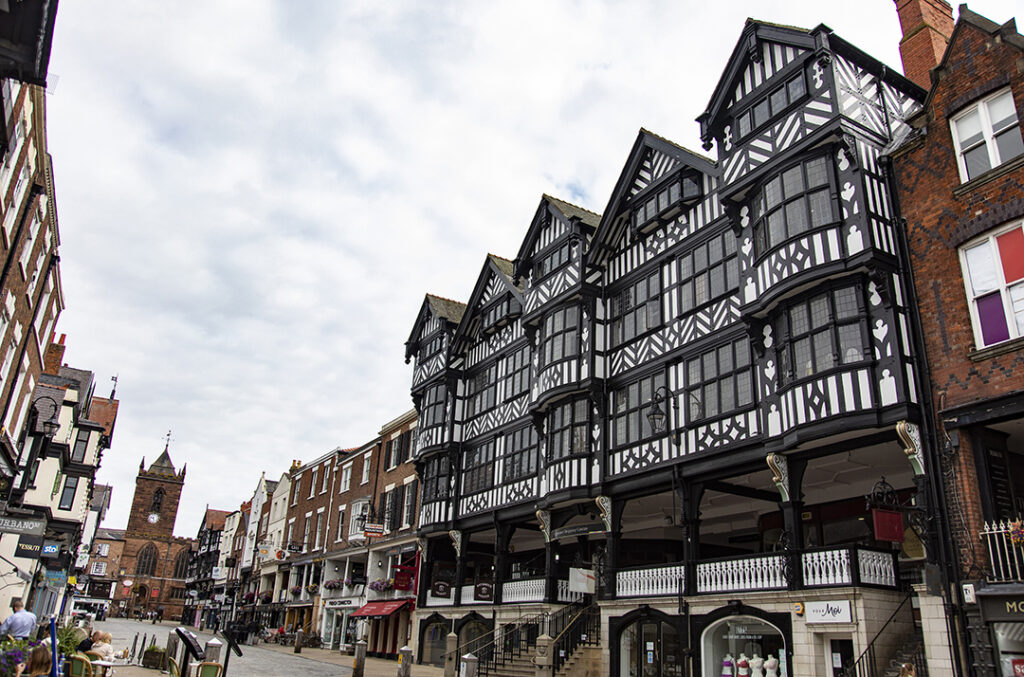
The city’s unique world-famous two-tier shopping galleries dating from the 14th century with their distinctive black and white half-timbered facades.
Roman Amphitheatre
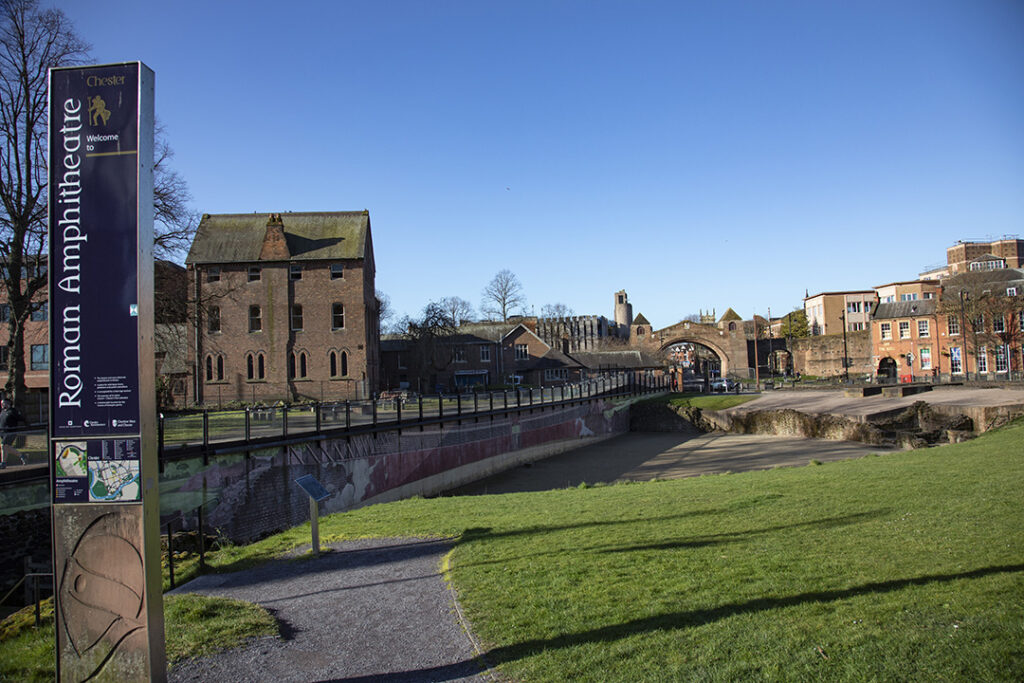
One of the largest arenas ever uncovered in Britain built by the Roman Empire 2000 years ago where 7000 spectators watched gladiator fights and spectacular circuses. It was also used as a military training ground.
Chester Cathedral
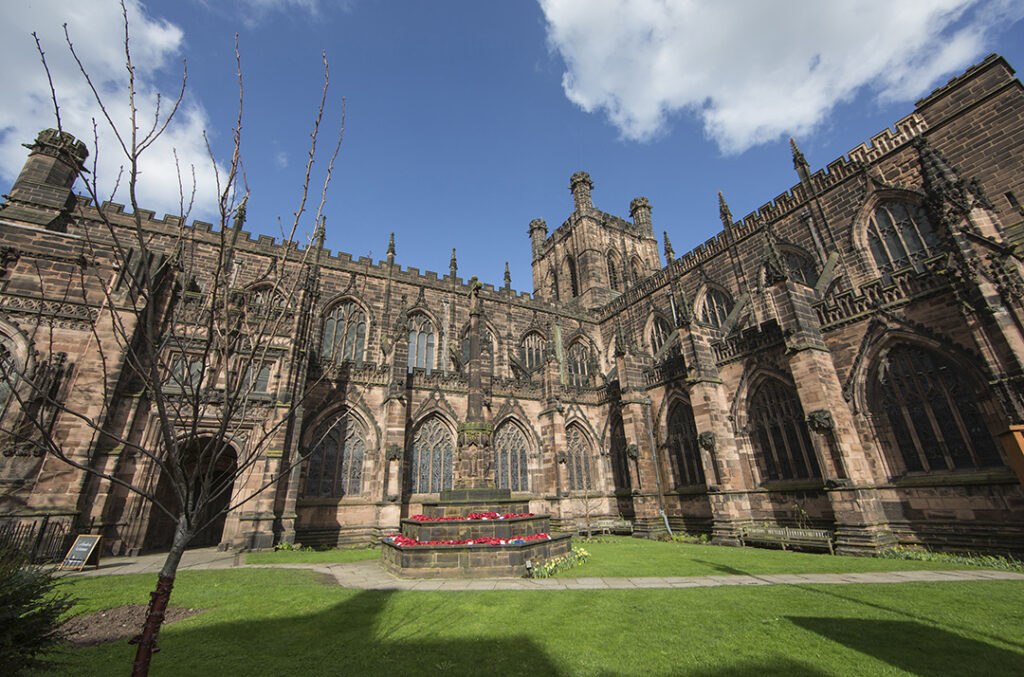
A place of worship for over 1000 years and was built by the Norman invaders on a site previously occupied by a Roman temple and an Anglo-Saxon church. Its mediaeval carvings in the choir stalls featuring strange beasts and folklore myths are among the finest in Europe and its 17th century Consistory Court is the only complete example of its kind in England.
Chester Races

The oldest in Britain and are staged throughout the summer and autumn on The Roodee, once the site of a massive Roman harbour 2000 years ago where galleys anchored and unloaded their cargoes from across the Empire. The horse races replaced football matches that were banned for being too violent. Nowadays, the city’s football stadium nearby is uniquely in both England and Wales.
Eastgate Clock
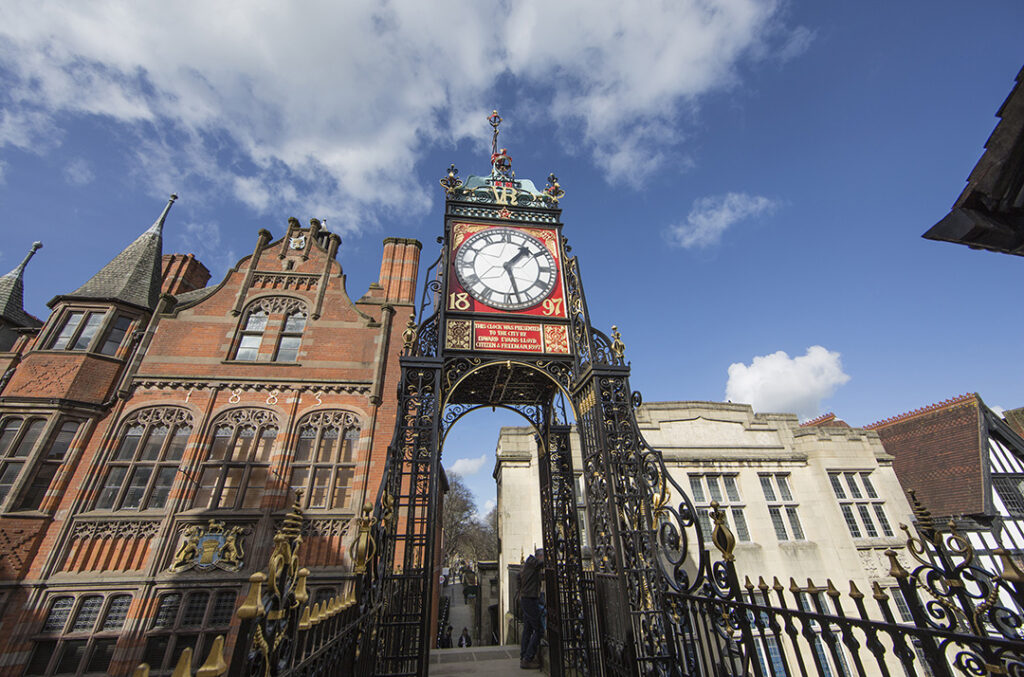
One of the most photographed timepieces in the world and was erected to celebrate Queen Victoria’s Diamond Jubilee in 1897 although it was not installed until 1899 because of huge public outcry over its cost during a period of poverty experienced by some residents. It stands on the City Wall over the original Roman gateway of the Fortress of Deva established 2000 years ago.
Grosvenor Museum
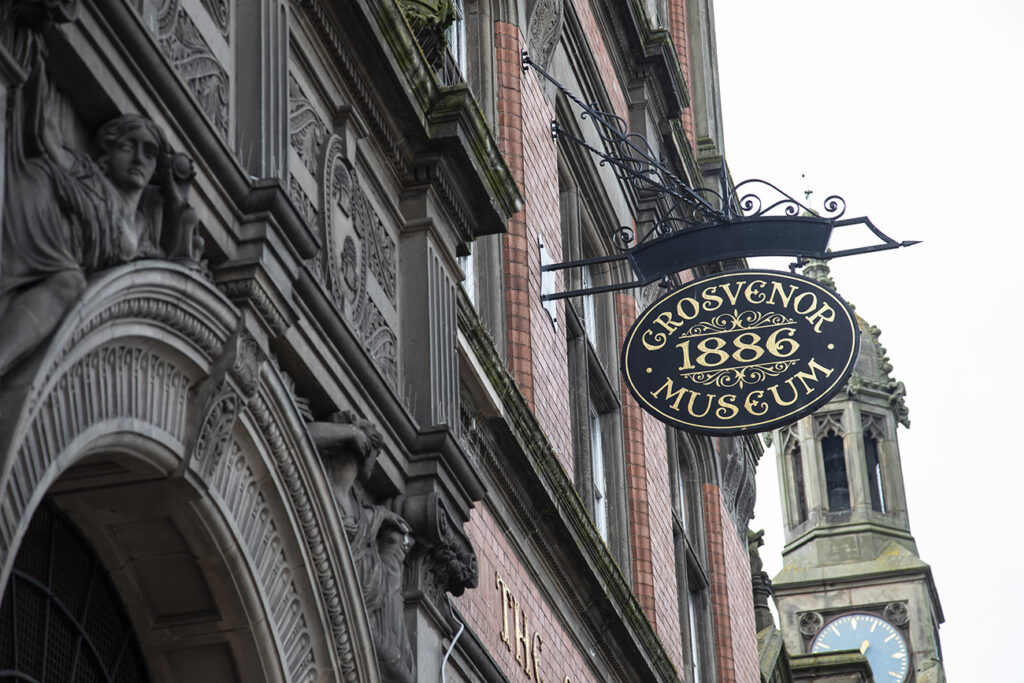
A treasure house of history and features one of the best-preserved Roman tombstones in the world. They were found inside the walls of the Fortress of Deva protected from the elements and tell the stories of people who lived in the city 2000 years ago.
Chester Regatta
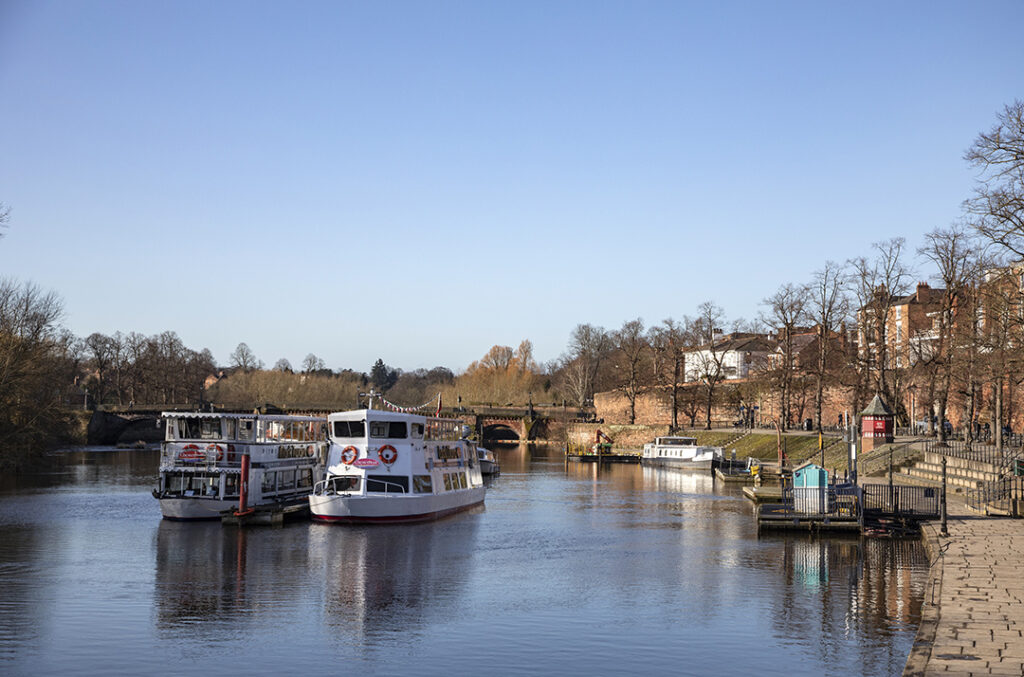
The oldest rowing regatta in the world staged annually on the River Dee that rises in the mountains of North Wales and flows into the Irish Sea via the Dee Estuary.
It was the River Dee that brought the Roman Empire to the shores of Chester and still features one of the few surviving weirs built by the Norman invaders to power corn mills along the riverbank.
The city was the largest port in North West England during the Middle Ages and sailing ships from across the world unloaded cargoes on its quaysides until the River Dee silted up gradually across the centuries and trade crossed instead to the River Mersey and a village called Liverpool.
Grosvenor Bridge
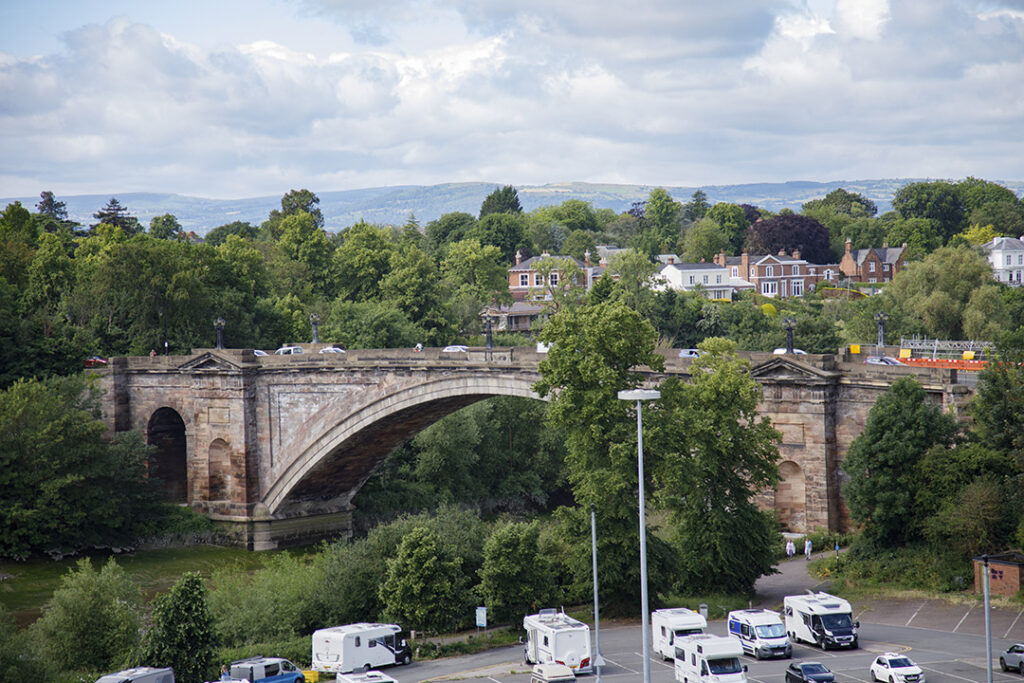
The bridge over the River Dee was the longest single-span stone arch structure of its kind in the world when it was opened by Princess (later Queen) Victoria in 1832. It was designed by Thomas Harrison.
Chester Zoo
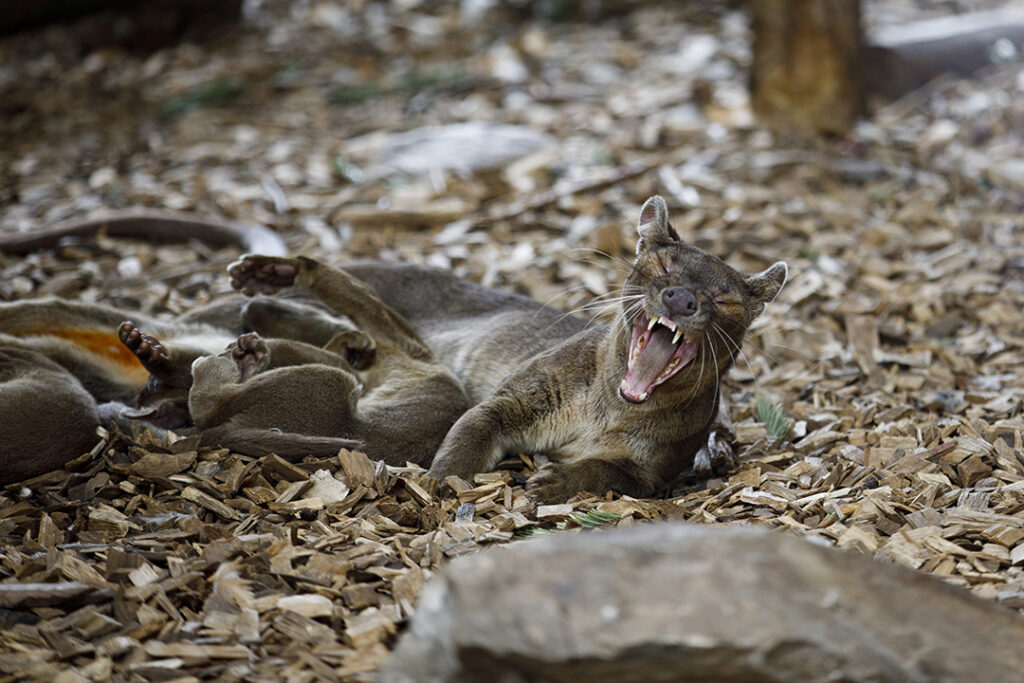
Just outside the city is the most visited UK attraction outside of London one of the most visited attractions in Britain and is home to 21,000 animals from 500 different species in acres of glorious gardens.
